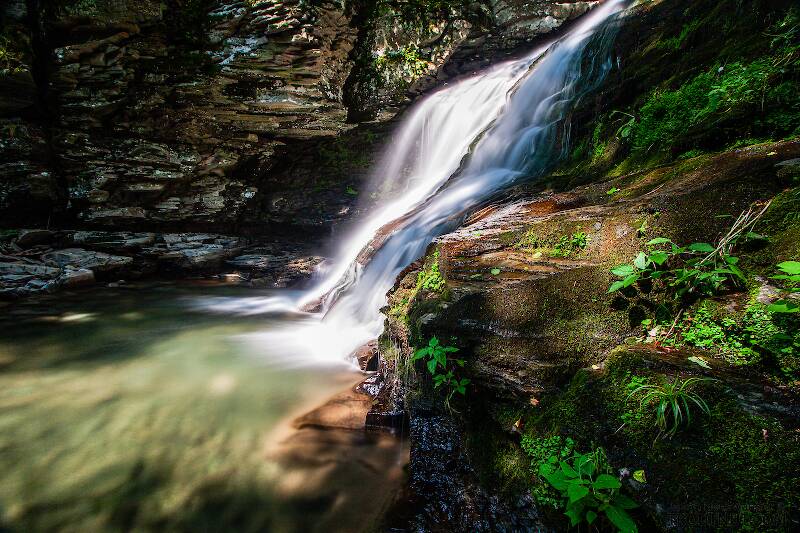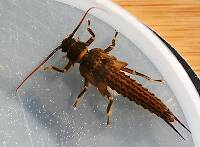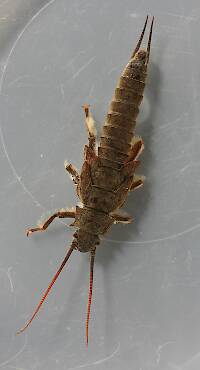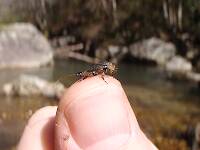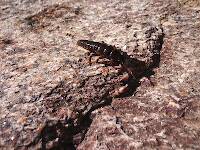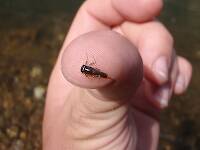
Salmonflies
Pteronarcys californica
The giant Salmonflies of the Western mountains are legendary for their proclivity to elicit consistent dry-fly action and ferocious strikes.
Featured on the forum

This species was fairly abundant in a February sample of the upper Yakima.

Troutnut is a project started in 2003 by salmonid ecologist Jason "Troutnut" Neuswanger to help anglers and
fly tyers unabashedly embrace the entomological side of the sport. Learn more about Troutnut or
support the project for an enhanced experience here.
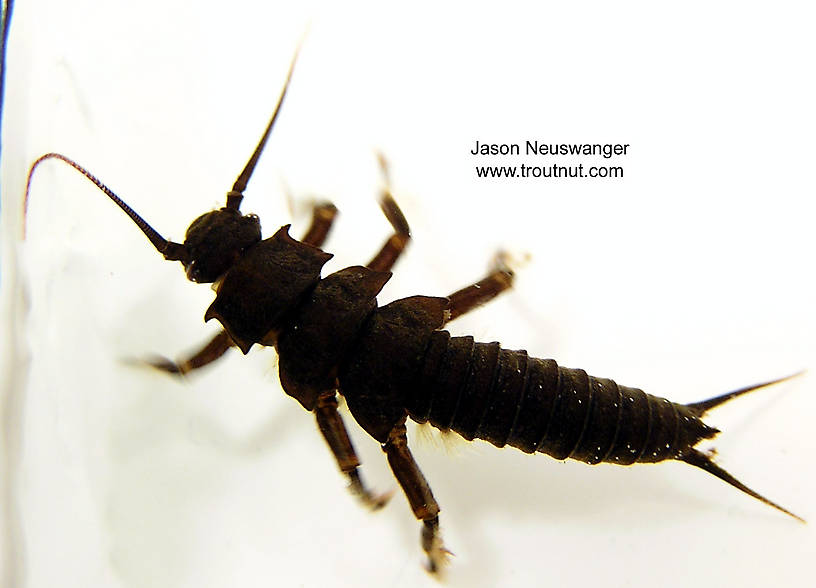
Pteronarcys nymphs live for two years before maturing. This small one is in its first year.
Shawnny3 on Jun 29, 2008June 29th, 2008, 12:33 pm EDT
Is Pteronarcys the one that curls into a fetal position when disturbed? I don't see any pictures like that in this section, but I'm pretty sure a stone I saw do that today was one of these.
-Shawn
-Shawn
Jewelry-Quality Artistic Salmon Flies, by Shawn Davis
www.davisflydesigns.com
www.davisflydesigns.com
GONZO on Jun 29, 2008June 29th, 2008, 1:58 pm EDT
Hi Shawn,
Yes. A few other stoneflies will do that as well, but it is so characteristic of Pteronarcys that they are sometimes called "curlers."
Yes. A few other stoneflies will do that as well, but it is so characteristic of Pteronarcys that they are sometimes called "curlers."
Quick Reply
Related Discussions
Topic
Replies
Last Reply
13
Jan 28, 2011
by Entoman
by Entoman
1
Oct 28, 2008
by GONZO
by GONZO
4
Sep 4, 2012
by Entoman
by Entoman
3
Apr 26, 2010
by RyanBednar
by RyanBednar
8
Dec 10, 2009
by Jmd123
by Jmd123
21
Feb 19, 2013
by Gutcutter
by Gutcutter
27
Aug 10, 2012
by WestCO
by WestCO

